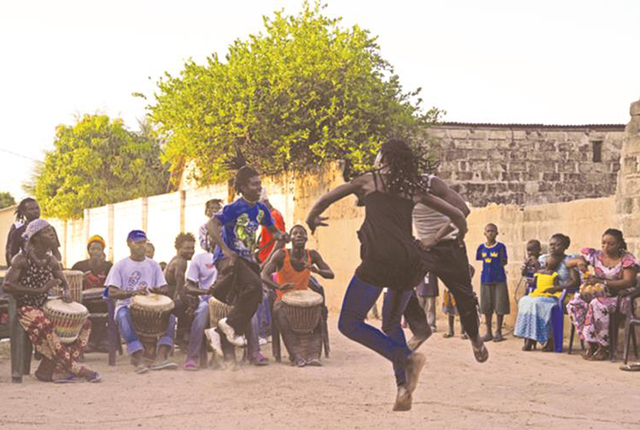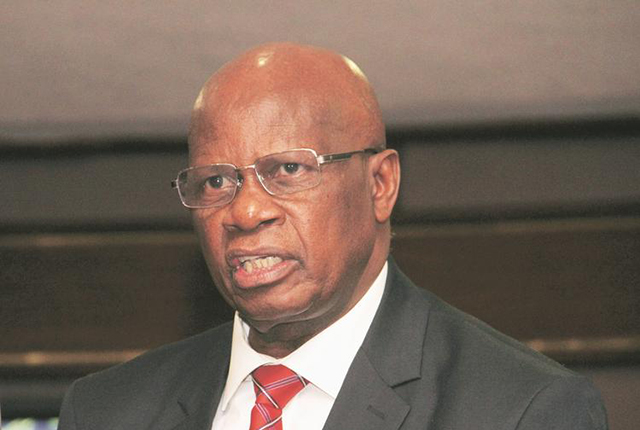Mixing cultures, celebrating Anglican wedding in Highfield

Sekai Nzenza On Wednesday—
WELCOME to the wedding at St Paul´s Anglican Church in Old Highfields. It is Saturday, the 3rd of December. The dressing theme for the wedding is red, yellow and black.We arrived here at 9am, only 15 minutes later than expected by Baba Magaya, the resident pastor here for the past five years.
He is young and energetic.
I notice that he is quite handsome, though women, especially mothers of the bridegroom, are not supposed to notice handsome men, let alone spiritual leaders of the church.
Today, I am standing in for the mother of the bride groom, my cousin sister, Mai Munyaradzi. She is here too, but I do all the work expected of the mother of the groom.
We drove from Old Canaan in a convoy of several cars decorated with yellow and red balloons.
The road was ours to do as we pleased.
No policeman or roadblock could stop us. My cousin Alex’s Isuzu was in front, with the photographer and his team sitting in the back, holding the video cameras like professional paparazzi, covering every single moment of the event.
Driving through the streets, all cars stopped for us and we hooted and kids from the houses along the streets stopped playing to dance, clap hands, cheer us and shout, “Muchato! Wedding! Hiiii, haaa, heee, muchato!”
We have been waiting for this day for the past three years because there was not enough money to pay for all the wedding expenses.
But, finally, Marshal and his bride Clammy, our muroora from Honde Valley, have made it to the altar.
According to traditional custom, these two are already married because we have followed all the requirements in paying lobola.
But the Anglican Church might see them as living in sin.
The church in Highfield is spacious and beautifully built more than 60 years ago. It is not too far from the former houses of our heroic liberation war fathers, who resisted British colonial rule.
Their old houses are still standing.
Marshal pointed out to the house of His Excellency President Mugabe as we drove to the church.
Years later, we are enjoying the fruits of independence.
St Paul’s Church in Old Highfield no longer waits for a white Anglican pastor from the city to come and minister to the natives. No. We have our own Baba Magaya (not related to the one of PHD Ministries prophet) and many other pastors and assistants.
It’s a whole hour before Clammy Marowa arrives in a white car also decorated with plenty of yellow and red balloons.
She is accompanied by the best girl and her aunt, Tete.
Behind her are bridal cars with seven ladies in bright yellow dresses and wearing red shoes. They are accompanied by seven grooms men in black suits, white shirts, red waist coats, red ties and shiny black shoes.
One car arrives carrying seven young pretty girls, most of them my nieces, in white dresses, white shoes and hair nicely pulled to the top into a bun and decorated with studs.
The seven girls are accompanied by seven boys wearing similar suits to that of the grooms men except these boys have yellow ties and no waistcoats.
The bride’s hair is wavy and coiffured. The veil begins from the middle of her head and flows down to her bottom. Revealing a huge cleavage, she is beautiful, dark skinned, well poised, serious, demure, and shy.
For a moment, I do not see Mai Rufaro, but a virgin dressed in a lovely historical virginal white gown.
Early Anglican missionaries would have wanted to see an African virgin walking along this isle.
Or, at least, a woman who claimed that she was indeed a virgin. But, here at St Paul’s church, we are not thinking of virginity or anything like that.
We have our muroora. We paid lobola and besides, we are not even mentioning that she has already given us twins, Mufaro and Rufaro, Sadly, at six months, Mufaro died and we accepted that God and the ancestors took her away.
Today, we are here in church following the Anglican tradition.
When the vows are all done, Baba Magaya says, it’s time to kiss the bride.
Can Marshal kiss the way Europeans do on television?
Will Clammy also twist her tongue and demonstrate such an intimate moment publicly?
We are surprised as we watch Marshal take off his jacket and his waist coat.
He shakes himself a little in order to gather all his manly energy.
Then he takes a step forward. Clammy looks down, shy.
Marshal holds both her cheeks in his hands and turns her head to the right side. He opens his lips and gently places his lips on her hers.
She opens her mouth slightly and for four or maybe five seconds, we see the tongues moving.
There is loud applause.
Bride and groom take a visible deep breath (or is it a sigh of relief?) as if exhausted. She smiles. He moves back, with a look of satisfaction.
The men shout, “Mukanya wakapinda!” We are not sure what that means, but it’s a statement.
Baba Magaya says: “Ah, saka ndizvo zvingabvisirwe bhachi izvozvo!” meaning did Marshall really have to take off his jacket to give such a small kiss?
There is loud uproar of laughter followed by the singing and drumming.
After Holy Communion, it is time for speeches from close family.
My brother Sidney, as Sekuru or uncle of the groom, comes on stage, dressed in a nice grey suit, bought by his daughter Shuvai who is based in North Carolina.
He introduces himself as Mutekedza Nyashanu of the Vahera clan.
He tells the audience that we are Christians and Marshal has followed the tradition set by his parents in getting married in church.
Marshal and Clammy met within the church and as Baba Magaya had earlier mentioned, Marshal sang a beautiful song one day in church and Clammy fell in love with him.
“Akaimba mukomana, akabva adiwa!” Sidney shouts.
Then Sidney asks Marshal to come over and sing the song that won him the love of his future wife.
A group of young men come to the stage and we witness one of the most beautiful male vocal singing, led by Marshal´s voice on the microphone and his other hand with the hosho: “Mufudzi unondida, chengeta nyenye yako . . .”
When the speeches are over, we all prepare for the journey to the wedding venue, outside Harare, along the road to Bulawayo.
We arrive at the beautiful landscaped garden with flowers complimented by several mutondo trees and a very nice lawn.
A big tent is placed in the middle of the garden.
There are several chairs for guests and eight tables at the front for close relatives.
There are no fancy candles, flowers or wine glasses.
It’s a simple and well-organised wedding. At this wedding, we all have a role to play. Marshal’s friends and my other nephews help with cooking.
Music is a mix of traditional and modern songs. There is plenty of dancing space. The bridal party does some amazing choreographed dances.
Then they go and change from the red and white outfits into matching African yellow and red prints.
Food, the highlight of the event is now served.
Initially, we the close relatives at the high table are very disappointed to see rice, sadza, chicken, beef and salads being served in kaylights or disposable containers to the masses of people sitting at the back.
Most of these people are probably not invited at all. But each one of them gets a container of food, a soft drink and a big apple while we, the real relatives, hama dzepedyo, watch with dry hungry lips.
We wonder if there would be enough for us to eat.
When the distant friends and relatives are full, we see some of them dancing on the lawn and we are not looking too happy. I go and complain to the food team.
But I should have been patient because, our own food immediately started to arrive. It comes in big white dinner plates, with a real fork and knife.
We have big servings of sadza, rice, potatoes, chicken, beef and gravy with beans, carrots, salads and lots of gravy. There is more than enough to eat.
We realise that serving the masses first in small disposable containers is a great idea at weddings.
If they are still hungry, they can ask for more.
Nobody can say they were starved at Marshal and Clammy´s wedding last week.
Even the gate crashers, who did not know whose wedding it was, ate and danced. Then presents poured. There was money, goats, fridges, stoves and other goods from relatives and friends.
An hour before the end of the ceremony, the bridal team disappears for a good 20 minutes. Then the DJ puts on the old classic song: “Ndakabva naye kure kure kwaMurambinda . . .””
From behind the wedding tent, the bridal team storms on to the dance floor, barefoot.
They are dressed in village style torn clothes and funny outfits with patches. They dance in all kinds of jiti styles, including kongonya.
Then we join in, old and young, Christians and all.
You would not have recognised the bridal team that had been singing church hymns in St Paul´s cathedral earlier on. The wedding party was transformed as the song took us back to past rhythmic dances and memories of the village.
Dr Sekai Nzenza is a writer and cultural critic.







Comments